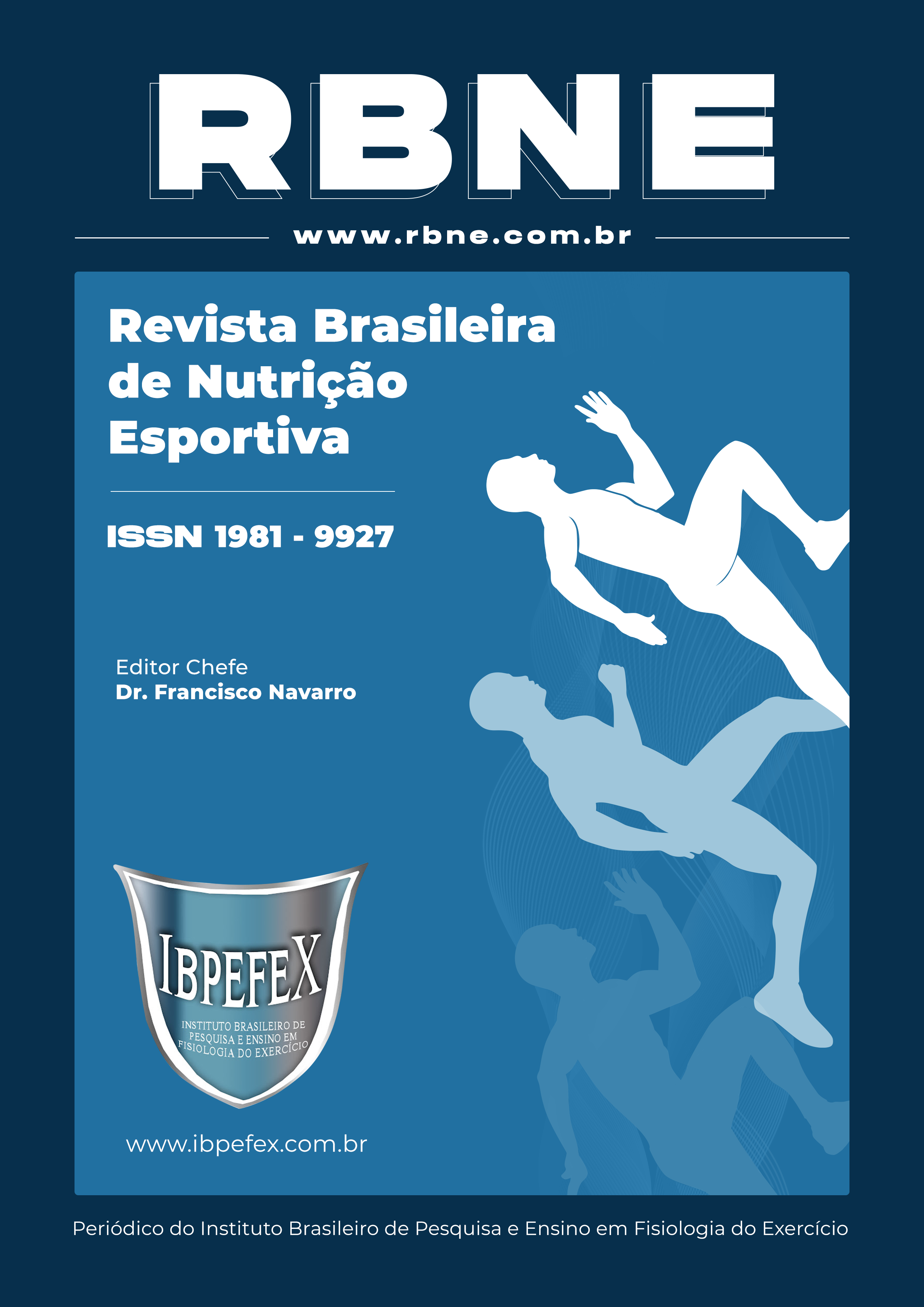Media influence on bodybuilding people in gyms in the city of Fortaleza-Ceará
Abstract
The present study was conducted to verify the influence of the media on strength training and to make a relationship between the body satisfaction index. A cross-cultural adaptation of the Sociocultural Attitudes Towards Appearance Questionnaire-3 (SATAQ-3) was applied to the Brazilian population, as well as the Damascene Silhouettes Scale. It was observed that the majority of the sample (75%) is influenced by the media in general by the four influencing factors, (Information = 33%; General Internalization = 25%; Pressure = 16%; and Athletic Internalization = 0%), whereas 25% of the individuals had a predominance of the non-influence factor (reverse score items). The predominant subscale in influence was the media factor as a source of information about appearance. Regarding the relationship between body dissatisfaction and search for digital and social media, it was not possible to verify precisely whether the most dissatisfied individuals search for such media or not. It is concluded that social, digital media play an overweight role in influencing strength training, and that the main factor in influencing is the media as a source of training information and the beautiful body.
References
-Amaral, A. C. Adaptação Transcultural do Sociocultural Attitudes Towards Appearance Questionnaire - 3 (SATAQ - 3) Para a População Brasileira. Dissertação de Mestrado. UFJF. Juiz de Fora. 2011.
-Botta, R. A. Television images and adolescent girl’s body image disturbance. Journal of Communication. Vol. 49. Num. 2. 1999. p. 22-41.
-Carvalho, Y. M. O mito da atividade física e saúde. São Paulo. Hucitec. 1995. p. 121.
-Coll, C. V. N.; Amorim, T. C.; Hallal, P. C. Percepção de Adolescentes e Adultos Referente à Influência da Mídia Sobre o Estilo de Vida. Revista Brasileira de Atividade Física & Saúde. Florianópolis. Vol. 15. Num. 2. 2010. p. 105-110.
-Delecrode, J. A. Mídia e Educação: processos desencadeadores sobre o desenvolvimento do corpo. 2014. Disponível em:< http://www.psicologia.pt/artigos/textos/A0814.pdf >. Acessado em: 10/01/2019.
-Damasceno, V.O.; Lima, J.R.P.; Vianna, J.M.; Silva, A.C.; Silva, S.F. Insatisfação com a imagem corporal e variáveis antropométricas de praticantes de atividades em academia. EFDeportes.com. Revista Digital. Buenos Aires. Num. 175. 2012.
-Fleck, S. J.; Kraemer, W. J. Fundamentos do Treinamento de Força Muscular. Porto Alegre. 4ª edição. p. 472. 2017.
-Malysse, S. (H)altères-ego: olhares franceses nos bastidores da corpolatria carioca. In Nu e Vestido. Miriam Goldemberg (org.). Rio de Janeiro. Record. 2002.
-Santos, S. C.; Knijnik, J. D. Motivos de Adesão à Prática de Atividade Física na Vida Adulta Intermediária. Revista Mackenzie de Educação Física e Esporte. 2006. Vol. 5. Num. 1. p. 23-34.
-Saba, F. K. F. Aderência à prática do exercício físico em academias. São Paulo. Manole. 2001. p. 61-81.
-Smith, A. R.; Hames, J. L.; Joiner, T. E. Status update: Maladaptive Facebook usage predicts increases in body dissatisfaction and bulimic symptoms. J. Affect. Disord. Vol. 149. p. 235-240. 2013.
-Silva, A. M. Corpo, ciência e mercado: reflexões acerca da gestão de um novo arquétipo da felicidade. Florianópolis. Editora da UFSC. 2001. p. 144.
Copyright (c) 2023 João Victor da Silva Santos, Welton Daniel Godinho, João Valter Gomes Neto, Francisco Nataniel Macedo Uchôa, Romário Primeiro Lustosa

This work is licensed under a Creative Commons Attribution-NonCommercial 4.0 International License.
Authors who publish in this journal agree to the following terms:
- Authors retain the copyright and grant the journal the right of first publication, with work simultaneously licensed under the Creative Commons Attribution License BY-NC which allows the sharing of the work with acknowledgment of the authorship of the work and initial publication in this journal.
- Authors are authorized to enter into additional contracts separately for non-exclusive distribution of the version of the work published in this journal (eg, publishing in institutional repository or book chapter), with acknowledgment of authorship and initial publication in this journal.
- Authors are allowed and encouraged to post and distribute their work online (eg, in institutional repositories or on their personal page) at any point before or during the editorial process, as this can bring about productive change as well as increase impact and impact. citation of published work (See The Effect of Free Access).






